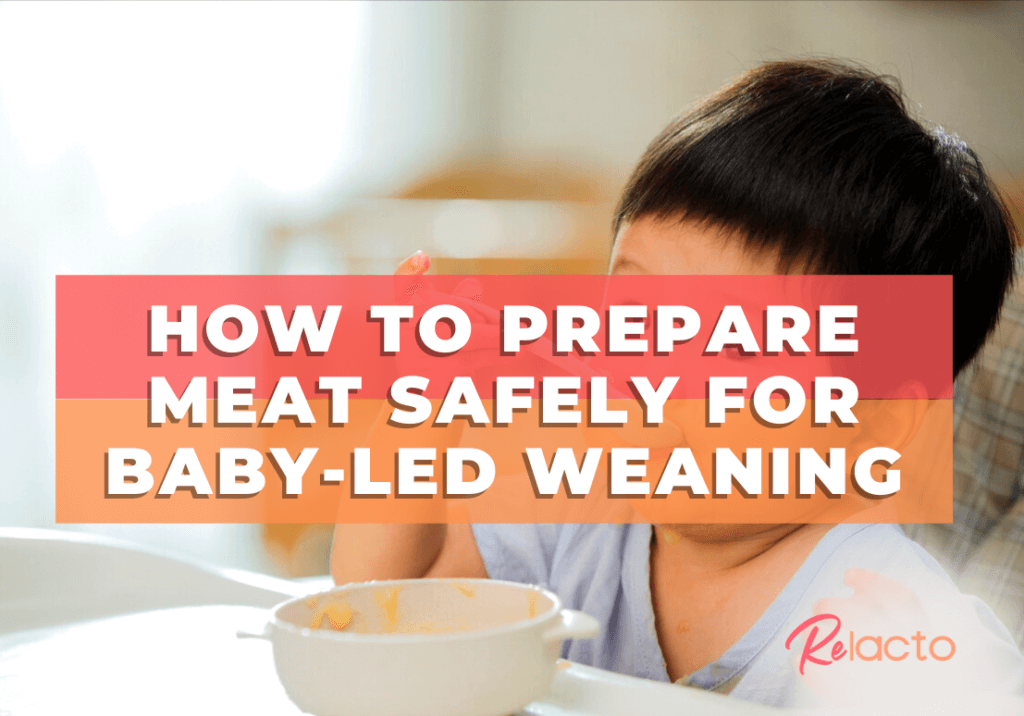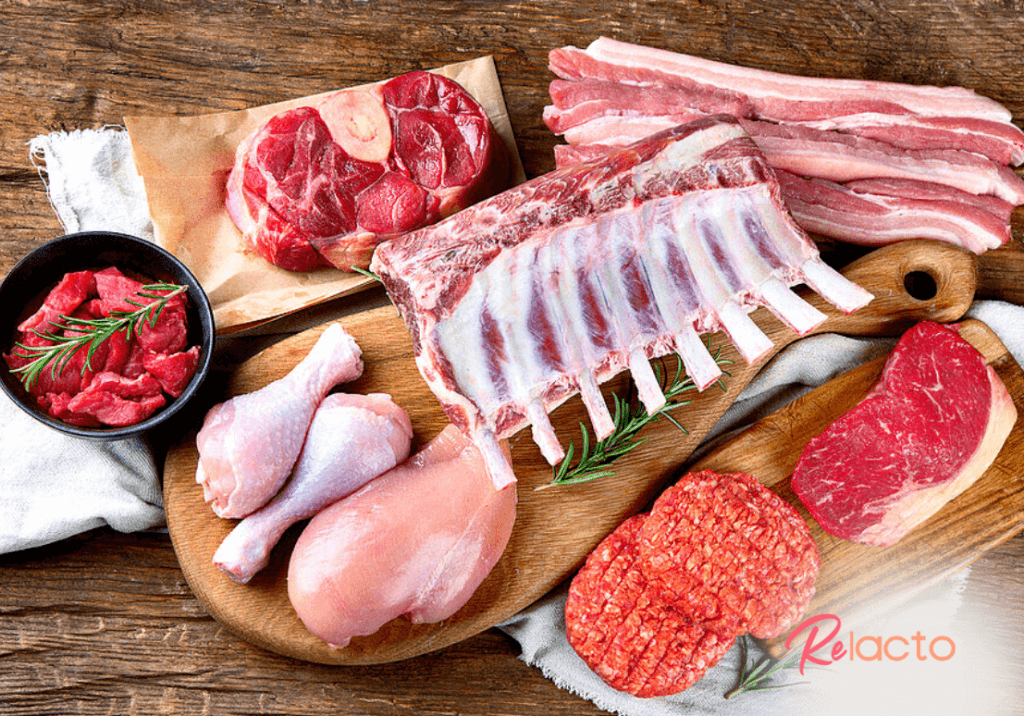How to Prepare Meat Safely For Baby-led Weaning

Babies are usually ready to start having complementary foods when they are around 6 months old. And one of the main foods we would like to suggest for your little one is iron-rich foods. Contrary to popular belief, you do not have to instantly reach out for that iron-fortified rice cereal or iron-fortified snacks to give to your little one to have as their first few foods.
Believe it or not, you can introduce whole foods that are high in iron such as beef, lamb or even pork during the first week of weaning. Yes, you heard that right, you do not need to wait until your baby has teeth before you introduce them to meat.
One important thing to note is that they may not even taste it during the first few times you give them meat. They may play around with it and it can take 2, 4 or even 6 weeks after the initial exposure for them to be willing to eat meat successfully. This is not alarming and it’s completely normal. Do not get too concerned about your baby not being able to eat iron-rich foods instantly as babies are still able to obtain some iron (although minimal amounts, but they are highly bioavailable) from your breast milk.
Full term babies do have sufficient iron stores to last the first 6 months and only start to deplete during the second 6 months of life. It’s not going to instantly drop to low levels during the first week of weaning. What we are aiming to do during this weaning period is to prepare your baby to enjoy iron-rich foods once his or her diet depends more on whole foods and less of breast milk. So here’s how to provide them meat safely.
#1 Choose a fatty cut of meat

This may sound absurd but fatty meats are going to be your best friend as you introduce meat to your baby. Fatty meats keep the foods moist, soft and easy to manipulate in a baby’s mouth. Unlike lean meats where it can tend to be drier and tougher to manipulate in the baby’s mouth especially without teeth. Some of the common red meats are pork, beef or lamb. Fatty pork that is suitable and easy to cook to provide for babies are pork butt, pork shoulder and ground pork that is made with at least 80% lean and 20% fat.
#2 Cooking method
An easy cooking method you can take up to ensure that meats are cooked till soft is to cook it slow and low heat for 6 to 8 hours. If you have a pressure cooker, that would work as well and it’s much faster. You may be able to achieve the similar texture within 2 to 3 hours or so depending on the recipes. How to gauge the softness of the meat is to make sure that the meat is shreddable between your thumb and your index finger easily. This softness would be suitable for your babies to have to chew with their gums. Pork cuts like pork chop, pork loin or pork tenderloin are leaner and would still be too hard to spread with your fingers. It would also be very dry and too hard for the baby to chew.
#3 Cook without / minimal added salt and sugar
Babies do not need any added salt or sugar. This does not mean that babies have to eat bland tasting foods. They deserve flavourful foods, so use herbs to add flavours like cumin, turmeric, fennel, oregano, parsley and many more. These flavours allow babies to explore different taste profiles and have healthier diet preferences to healthier and flavourful foods that are not overly salty or sweet.
#4 Serve in strips the size of an adult pinky finger
All types of meat served should be spreadable with your fingers. Besides that, meat should also be served the size of an adult size pinky fingers. This shape and size would help to reduce the risk of choking as well. Yes, it does not have to be minced all the time, you can serve slices of meat safely in cuts like these. Avoid coin shaped cuts especially sausage cuts which have a higher risk of choking in babies.
#5 Serve in appropriate bowl size and suction mats
A mistake that many parents make with babies when starting to wean is that foods are placed directly on the table attached to the high chair. It can be frustrating for babies to grasp foods and it could end up being spread throughout the whole table as the food keeps slipping out of their hand. Thus, it’s wise for the food to be placed in bowls with suction mats so that the food can be easily scooped up from the bowl and into their hands as they push against the bowl wall. The suction mat would also prevent the bowl from moving and falling off the table as well.
#6 Avoid skin when serving to babies
This may be something easily overlooked by parents but skin on meats like chicken skin or fish skin. Although skin is soft and moist, skin can be tough for babies without teeth to tear and chew. The skin would not cut into smaller pieces by just chewing with gums. So it’s a good idea to avoid skin until your babies grow some teeth!
All in all, as your baby starts to wean at about 4 to 6 months old, your baby would most likely still heavily depend on breast milk and thus mummies eating well during this time is still very important.
Having drink lactogenic and lactation food menu can be helpful during this time to continue supporting mothers during this time for sufficient breast milk while maintaining her own nutritional status. Furthermore, having lactation food Singapore mothers usually have would provide you nutrients that support breastfeeding without the confinement restrictions that confinement food would provide.
If you are looking for nutritious and tasty lactation food Singapore with a wide variety, check out ReLacto’s lactation meal packages!







